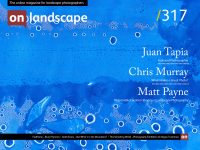Can We Balance Access to the Outdoors with the Need for Preservation?

Matt Payne
Matt Payne is a landscape photographer and mountain climber from Durango, Colorado. He’s the host of the weekly landscape photography podcast, “F-Stop Collaborate and Listen,” co-founder of the Nature First Photography Alliance, and co-founder of the Natural Landscape Photography Awards. He lives with his wife, Angela, his son Quinn, and his four cats, Juju, Chara, Arrow, and Vestal.
This week, I had the misfortune of having one of my most unique photographs go viral in a Facebook Group about Colorado Photography. I say misfortune because this explosion in views came with a litany of comments from viewers asking me to provide the exact location of the photograph. Having spent some time at this particular location, I'm keenly aware that it lacks the infrastructure that would need to accompany a mass influx of visitation, so I kept my lips sealed and simply stated that the image was captured in Colorado. This angered a lot of people for a variety of reasons, which we will expand on later in this article; however, I need to explain why so many photographers are keeping location information close to the vest.
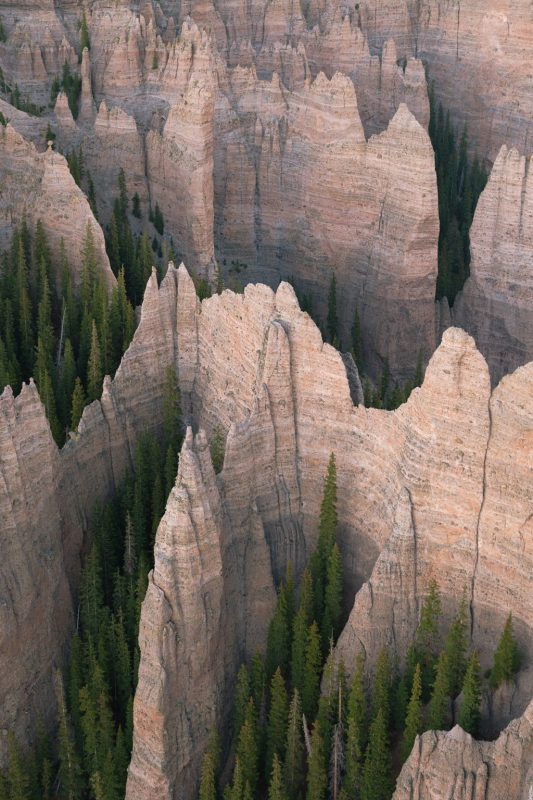
This photograph sparked outrage in a Facebook Photography Group because I refused to tell everyone where it was captured.
To paint a picture for you, I need to take you back to 2015. It was the very first time I ever visited what is now known as the most popular alpine destination in Colorado - Ice Lakes Basin. It was a pristine August weekend and my friend Ryan and I wanted to backpack into the basin so that I could climb Vermillion Peak nearby while we both engaged in some landscape photography. We had known about the location's potential for great photography through our meticulous research and were excited to go. Needless to say, we were both able to capture some great images and had a great time. We saw a total of four other people the entire weekend. I was so elated about my experience that I wrote an article about it for a now defunct magazine called the San Juans Mountain Journal. A friend of a friend and local resident of Ophir, Colorado, disparaged me for sharing information about this special place, which I didn't understand at the time. I thought, "What is the harm in sharing this location with other outdoor enthusiasts?"
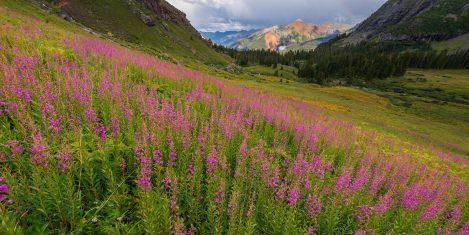
One of my first photographs from Ice Lake Basin, a beautiful place that has become overcome with visitation thanks to Geotagging on social media
Negative Impacts on Locations from Geotagging and Location Sharing in Photography
Fast forward to 2016 and beyond and it was clear to me that the word was out about this amazing place thanks to the proliferation of Instagram and Geotagging. Several huge and popular accounts with over a million followers had created some viral videos of Ice Lake Basin and the impact was extreme. The basin went from seeing 10-20 visitors a week to over 1,200 a day in a matter of a year. I returned in 2016 to find it packed with crowds of people, which transformed the location from a pristine nature experience filled with peace, solace, and solitude to one of noise, trash, and crowds of people. While this might not be a big deal for some places, it is a huge deal for a place like Ice Lake Basin. This location is above the tree line, where the tundra is quite sensitive to the impact of foot traffic. There is only a short vegetation growing season of approximately 50 to 60 days. Due to the extreme climate and limited opportunities for plant growth, this ecosystem is extremely sensitive to disturbance. Even modest human activity can result in many negative impacts on the ecosystem. Which is exactly what happened. Human faeces accumulated at the lake. Social trails exploded. Now a permit system is being implemented which will limit access, which is counter to what all of the anti-gatekeeping folks hate - more on that later.
I felt sick to my stomach about this situation and found there were other photographers who had similar experiences in the places they grew to love in the outdoors. My friend Erik Stensland, who owns a popular photography gallery in Estes Park at the base of Rocky Mountain National Park, told me about a location near and dear to his heart that was also transformed overnight. It was a location he felt personally responsible for destroying because he had mentioned its location in one of his guidebooks and in his social media posts:
"My heart sank as I approached the meadow. This spot, which for years had been the most fertile section of wildflowers, usually filled with a mixture of elephant head, scarlet and Sulphur Indian Paintbrush, pinnate-leaved daisies and Arrowleaf Senecio, was now just a field of gravel with a few sprouts of green struggling to poke through. My mind raced, trying to figure out what had happened. Then it slowly dawned on me. This area six miles back from the trailhead had been trampled by far too many feet. But why had they been to this remote location? How did they even know about it? It then dawned on me, causing me to feel almost ill: I had published numerous photos of this area, shared the location online, and then told everyone who asked where this area could be found. The flowers were gone because of me. Unwittingly I had helped to destroy one of the most beautiful fields of flowers to be found in Rocky Mountain National Park."

The famous dancing aspen trees of Colorado, once a kept secret, now a regular stop for workshops and a viral Instagram attraction. When I first visited this location over a decade ago, before Instagram popularized it and workshops flocked here, it was a different scene altogether. In fact, I only knew 2 or 3 other photographers that knew the location of the trees and I liked the fact that this hidden gem was kept a local secret. There wasn't a trail to get to them, and the grasses grew tall all around the trees. Now, the entire area is trampled and very little grass remains. People have begun peeling bark off of the trees, and the experience is completely transformed for the worse. If you decide to visit, do so with respect and let's protect these places for future generations.
The Problem with Geotagging and Photography Location Sharing on Social Media
It's dawned on me that for those new to nature, photography, or being outdoors, the idea that geotagging is a problem might not seem intuitive. After all, most individuals have never seen the before-and-after impacts on a place caused by geotagging and over-tourism. That is why I am compelled to write this article. I hope to provide insight as to why photographers might not be so ready to disclose their photography locations with you in the public domain, especially on social media where a post can go viral and be seen by millions of people who may or may not be instilled with the knowledge on how to properly care for a place. Perhaps even more problematic are the posts from large accounts looking to garner attention and monetization who are fully aware that their reels, videos, and photographs that contain geotags will result in more visitation to a place and simply don't care. They are fully OK with sacrificing a place for personal gain. I find that absolutely selfish, disturbing, and lacking forethought.
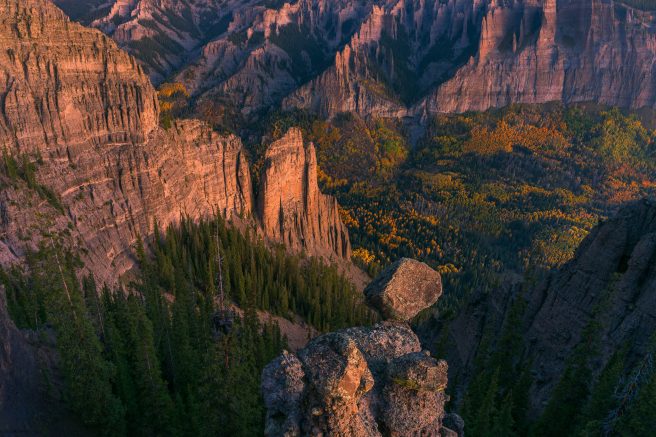
Of all the photographs I captured this year, this one is probably the one I'm most proud of. For starters, my friend Kane struck gold when he scouted this location on Google Earth, expecting to find the cliffs across the valley, but none of the intricate rock formations that scattered the landscape up here. In typical Matt Payne fashion, I leveraged my mountain climbing background and clambered dangerously down to this vantage point to use this balanced rock as a compositional aid.
Going beyond my example above of Ice Lakes Basin, there are countless other examples of locations getting overrun by the masses because of geotagging and location sharing. Perhaps the most memorable and insidious example is the California poppy flower super bloom of 2019. Social media influencers flocked to this fragile location for their shot of Instagram fame, drawn by countless geotagged photos on Instagram. The end result was that by the end of the week, the location was transformed from a beautiful hillside full of flowers to a barren landscape filled with social trails and dirt patches devoid of life. This is because of people walking off-trail into the flowers to get selfies and "look where I've been" type photos for social media. Each incidence of this slowly erodes the dirt and the flowers die from human foot traffic. But Matt, this was an isolated incident from a rare event, give me a break! Nope. I have countless other examples of other locations impacted by careless geotagging, or even worse, purposeful geotagging used to leverage clout on social media.
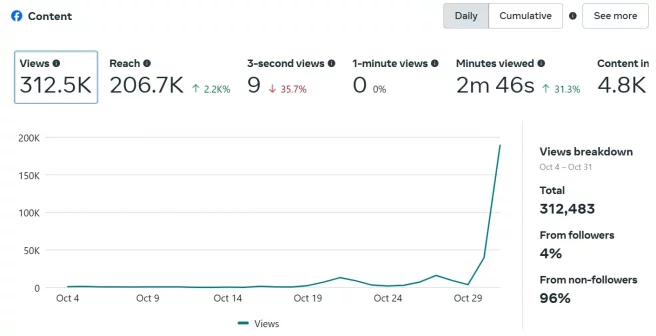
My Facebook post was seen by over 300,000 people. If I had geotagged the photo, just imagine how many people would be visiting this location that has zero infrastructure!
Alternatives for Geotagging and How to be a Responsible Photographer
Despite what you may think, I'm not fully anti-geotagging. I think it can be done in a responsible way when appropriate. In 2018, when 9 professional Colorado photographers and I met in Ridgway to discuss this problem, we developed 7 principles for nature photographers to follow to help stem these problems of our favorite treasured locations getting crushed by tourism - a movement we named Nature First. Firstly, we recognized that WE were the problem. Our photographs were inspiring others to visit these awesome places, which is pretty cool, but also completely unsustainable for some places. After vigorous debate, we reached a compromise for one of our principles that I think offers a nice middle ground for geotagging and location sharing: "Use discretion if sharing locations." To go further:
"Sharing location information can have significant consequences for that location. As soon as a place is determined to be photogenic, it becomes a magnet for photographers and the general public. Many natural places simply cannot survive a significant increase in visitation. Keeping natural areas off the radar is the best way to protect them. If you decide to share information, only share the locations of well-known places or areas which are unlikely to be damaged by increased visitation. Respect other photographers who have made a choice not to share location information. Some areas can also be seasonally sensitive such as wildflower fields and fall color forests. Consider a ‘thoughtful pause’ of a week or more before posting your images to reduce the impact of real time trending and potentially harmful footprints of people who may want to immediately follow you to these locations."
To put it simply, geotagging makes sense for places that can handle an influx of visitation. Think parking lots, toilets, maintained trails, and trash receptacles. If a location does not have these amenities, consider tagging a broader location, such as National Park or general area, like the state or country. All I ask others to do is to think before acting. What will happen if I geotag this particular location? What ramifications will it have? I know it might be too much to ask people to put the needs of nature in front of their own personal needs and desires, but it is what I think is required if we are to experience these places in a way that preserves their essence. P.S., since 2019, over 5,500 photographers from 77 countries have signed-on to pledge their support of these ideals.
Gatekeeping and Geotagging - Shame-driven Nomenclature
When location information is excluded from a photo post on social media, it can sometimes leave a viewer feeling like they are being kept away from a secret that they don't deserve to visit. While I can appreciate people feeling this way, I don't really understand it, perhaps because I value adventure and exploration over the end result of my photography exploits.
It has been suggested to me that by withholding location information from my photographs that I'm somehow keeping someone from experiencing the outdoors. I've had numerous people try to shame me into sharing the information with them or else I be accused of gatekeeping. I personally find this to lack logic and I believe it reeks of entitlement. I fully understand that by seeing one of my photographs, you may want to also visit that exact spot to experience it for yourself. You are welcome to. I am doing nothing on my end to prevent that from happening, and you are fully capable of taking the same steps I did to explore and discover your own favorite places in the outdoors. Some of my favorite tools to help me find locations are Google Earth and Gaia GPS. They are both free and you can use them at any time. I promise not to stop you.
In my experience, people who need to put in effort to find a place actually value it more, leading to a desire to protect it from destruction. This is actually backed up by recent psychological and economic research. For mysterious reasons, we are hardwired to value something more if we've put in sweat equity — what we had to do to get. By being spoon-fed location information, people place a lower value on those places.
Going further, let's actually look at the definition of gatekeeping in the dictionary:
The Oxford Dictionary defines gatekeeping as such: "the activity of controlling, and usually limiting, general access to something."
I think the phrase gatekeeping been perversely over-applied (seriously this is a great read) by those who feel entitled to information without putting in any effort to learn first about a place and why someone might not want to share details about it.
To quote the above linked article, "I still think a little gatekeeping can be a good thing depending on the context. The implicit demand to reveal the thought process behind every decision and the provenance of every purchase feels like socially enforced oversharing. The rise of “Don’t gatekeep” has reframed keeping things to yourself as a selfish act. But not everything is for everyone! And sometimes the act of sharing does more harm than good." Amen!
I fail to see how me not giving you the GPS coordinates of my photographs is keeping you from accessing the outdoors. You are free to explore. In fact, exploration is part of the fun. Embrace it. Open your door, go outside, and enjoy nature. The idea that having knowledge about the location of a photograph will somehow make you more able to enjoy nature is rooted in a feeling of missing out. In fact, I'd offer that if your enjoyment of nature necessitates you knowing where a photograph was taken, then your purpose for going outside was never about being in nature but was rather to collect a moment, trophy, and experience for yourself to alleviate your FOMO (fear of missing out) and to get more likes on Instagram in the name of narcissism.
I also understood the nuance of the issue. People are wired as social beings. We WANT to help others. We LOVE to share. There's something truly HUMAN about sharing and helping fellow people! It's important to recognize that just because we love to share doesn't mean it always makes sense to do it in such a public way such as geotagging or posting viral videos, and it can often be irresponsible to do so.
Leave No Trace and Social Media
I've also heard it suggested that we can stem the impact of geotagging by including Leave No Trace principles in our captions. In fact, Leave No Trace has back-peddled on their guidance on geotagging, stating, "posting a photo that specifies your location along with appropriate Leave No Trace information can be a great way for others to learn about your favorite place and invite people into the outdoors." This sounds Pollyanna to me. Here's what Leave No Trace's guidance used to say, and I think it still makes way more sense because it offers NUANCE:
"Tag thoughtfully – avoid tagging (or geotagging) specific locations. Instead, tag a general location such as a state or region, if any at all. While tagging can seem innocent, it can also lead to significant impacts to particular places."
With all due respect to Leave No Trace, I personally find it laughable that they think people will change their behavior after visiting a geotagged Instagram post that includes Leave No Trace information. While I think it is important to educate others on the importance of Leave No Trace Principles, the thought that captions including Leave No Trace will wash away all of the selfish behavior we see in the outdoors is simply an idealistic romanticization and fantasy.
In fact, there's been research conducted about this very issue! In a study from 2020, researchers aimed to evaluate the efficacy of different Leave No Trace communication interventions designed to persuade forest visitors to practice low-impact camping behaviors. The study assessed three harmful campsite behaviors—littering, tree damage, and improper disposal of human waste—by comparing conditions before and after interventions. Three Leave No Trace communication methods were tested against a control group: (1) non-personal outreach through brochures and posters (similar to captions in an Instagram post), (2) direct Leave No Trace messaging from a forest naturalist, and (3) a combination of both approaches. Results showed that targeted Leave No Trace messaging effectively reduced negative behaviors. Personal communication from a naturalist improved litter and human waste issues, whereas non-personal outreach had little impact. No additional benefit emerged from combining personal and non-personal methods. This research highlights the importance of personal communication by uniformed staff in promoting responsible camping practices and showcases just how romantically idealistic but unrealistic Leave No Trace's new social media guidelines are.
If we are to have a meaningful impact in using education to reduce the impacts of geotagging in photography, it should be accompanied by volunteers or paid staff at these locations to provide education in person, which surely would cost taxpayers significant money to implement. I'm all for it, but it demonstrates that captioning is not a feasible alternative for in-person intervention.
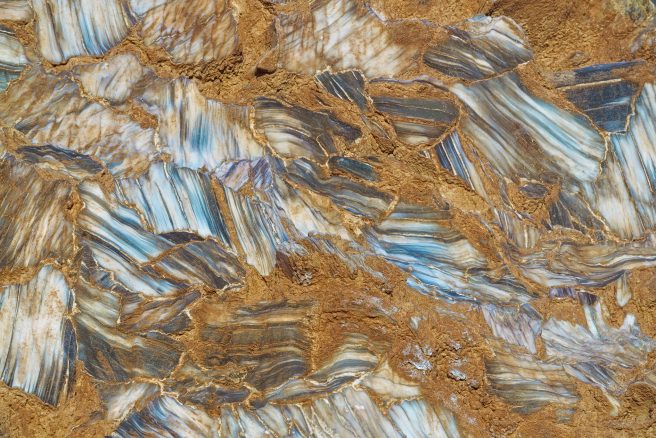
The location where I photographed these minerals has experienced significant vandalism, trash, and other disturbing behavior due to geotagging and social media
A.I. and the Desire for Photography Location Information on Social Media Posts
Respect the Photographer
Thanks to the proliferation of AI image generation, a lot of public trust has been lost in photography. Lately, I’ve noticed something happening in social media as a result: if a photographer shares an image without tagging the location, there’s often someone in the comments asking where it was taken because they don't think the location is real or they think it is created by AI. If the original photographer doesn’t respond, someone else usually jumps in to reveal it. In my view, this behavior is rude, selfish, and is based in wanting to brag about having knowledge. Furthermore, doing this is disrespectful to the photographer who intentionally left out the location. Whatever the reason for their choice, it deserves respect. If people disagree, they can always share their own photo with location details on their own profile. But as with so much online, it seems like showing understanding and respect is too often missing.
There are real and valid reasons for keeping locations private. A sensitive area can easily become overrun if it gets popular on social media. Not sharing the location can be a way to protect these spots from this damage.
Finally, one big reason I rarely share exact locations myself is that photography, for me, is a blend of exploration, adventure, and discovery. By giving away the spot, we take away that joy for others who photograph partly for the thrill of finding it themselves. Without the exact coordinates, photographers are encouraged to discover the scene on their own – or maybe even stumble on something new and unique. That thrill of figuring it out, of exploring, is something I hold onto. And when an image does include precise location info, I feel it takes away from that.
Sure, some photographers rely on guidebooks or location guides to get the shot, and there’s nothing wrong with that. I use guides myself occasionally. But to me, part of the artistry in landscape photography is the journey of finding the scene. By respecting others' decisions not to disclose location info, we preserve the adventure and discovery that make landscape photography so rewarding.
Hopefully this article has at least given you some food for thought as it relates to this complicated issue that is often distilled into black and white talking points online. Thanks for your time. Please leave a comment below with your own thoughts.

